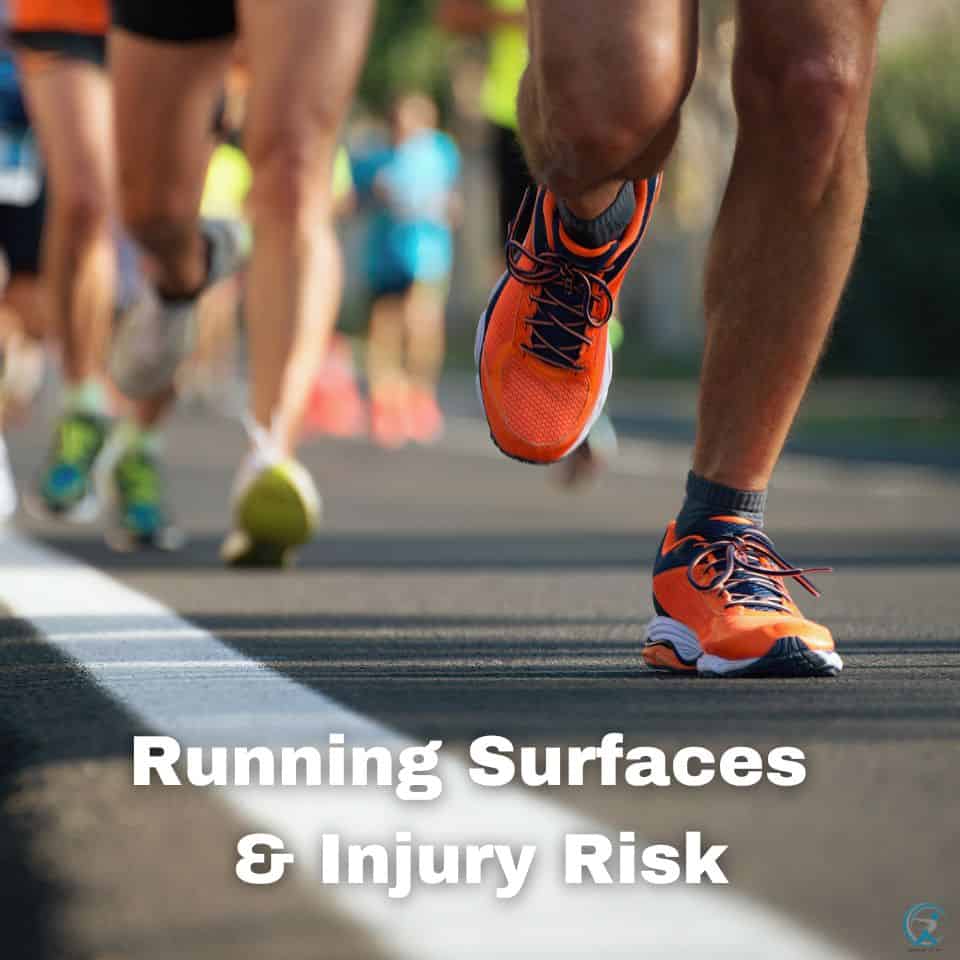Discover how different running surfaces affect your performance and injury risk. Learn how to choose the best surface for your body and goals.
Unearth the best surface to run on and dodge injuries with each stride! 🏃♀️🏃
As a runner, you’ve likely pondered the perfect running surface while pounding the pavement or trotting on a treadmill. The answer isn’t one-size-fits-all, but exploring the impact of various running surfaces on performance and injury risk can help you make an informed decision. So, lace up and join us as we navigate the asphalt, synthetic tracks, and grassy fields to unveil the secret to a smoother, safer run. Stay a step ahead of injuries, and keep on running!
The Importance of Running Surfaces
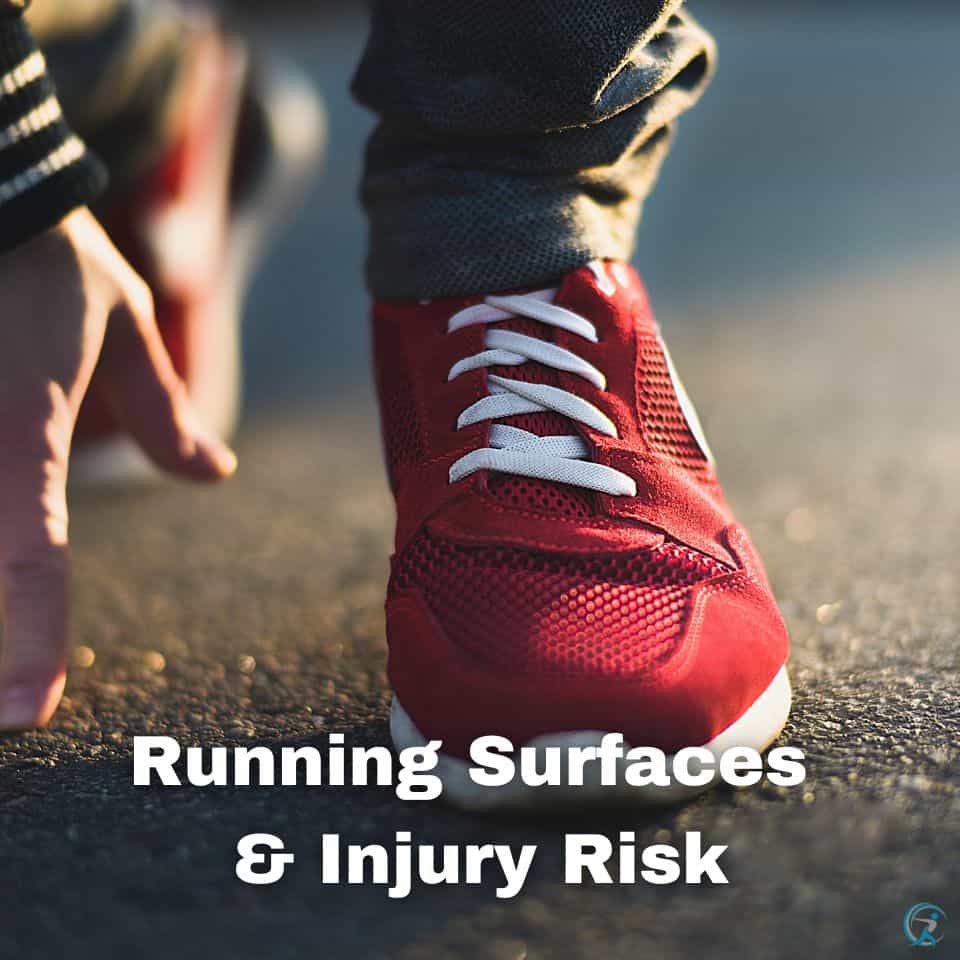
Running is a popular sport that provides numerous physical and mental health benefits. However, running on different surfaces can significantly impact performance and injury risk.
Running surfaces can be classified into three categories: hard surfaces (concrete, asphalt), soft surfaces (grass, dirt, sand), and mixed surfaces (tracks, treadmills). The choice of the surface should consider various factors such as environmental conditions, personal preferences, and injury history.
Understanding the importance of running surfaces for runners who want to maximize their performance while minimizing their injury risk is vital. A runner’s biomechanics vary depending on their surface, meaning that different running surfaces can affect their stride length, foot strike pattern, and joint mechanics.
Therefore, choosing the right surface for an individual’s unique biomechanics is essential for safe and effective training. The impact of running surfaces also extends beyond individual runners to competitive athletes who compete in different events on various terrains.
Marathon runners require long stretches of flat hard pavement to maintain consistent speeds, while cross-country athletes need soft natural terrains to avoid injuries due to high-impact training. Therefore understanding how running surfaces change performance levels and injury risks is critical in optimizing athletic careers.
Definition of Running Surfaces
A runner’s choice of surface affects their performance levels and injuries sustained during training. Hard surfaces include concrete roads or pavement; soft natural terrains such as grass or sand are considered ‘soft,’ while tracks with a rubberized topping or treadmills are considered ‘mixed.’ Additionally, various environmental factors affect which surface may best suit each runner. For example, wet or snowy conditions may make hard ground slippery, while muddy trails become almost impossible to navigate without slipping.
The definition of running surfaces highlights the importance of understanding the pros and cons of each surface. Concrete and asphalt surfaces are ideal for increasing speed. Still, they are incredibly high impact meaning a runner will likely suffer from injuries like shin splints or stress fractures during training.
On the other hand, soft surfaces like grass or sand reduce impact forces on joints, especially in events that require a lot of running like marathons. Mixed surfaces offer the best of both worlds, but they also come with their unique set of challenges.
The Purpose of This Article
The primary purpose of this paper is to explore how different running surfaces affect performance levels and injury risk in runners. We will review recent studies that have been conducted on this topic and analyze their findings to provide evidence-based recommendations on how runners can maximize their performance while minimizing injury risks. This paper aims to help runners make informed decisions when choosing running surfaces for different events, training programs, or environmental conditions.
Additionally, we hope this paper will increase awareness among coaches and medical professionals about the importance of running surfaces when designing training programs to help athletes prevent injuries while achieving their goals. Understanding how different running surfaces affect performance levels and injuries sustained during training is critical for safe, effective training.
It helps runners make informed decisions when choosing which surface to run on based on personal preferences and factors such as prior injury history or weather conditions. We hope our recommendations can help runners optimize their athletic careers safely by analyzing recent studies on this topic in detail.
Check Out: Treadmill Running – As Effective As Running Outside?
Types of Running Surfaces
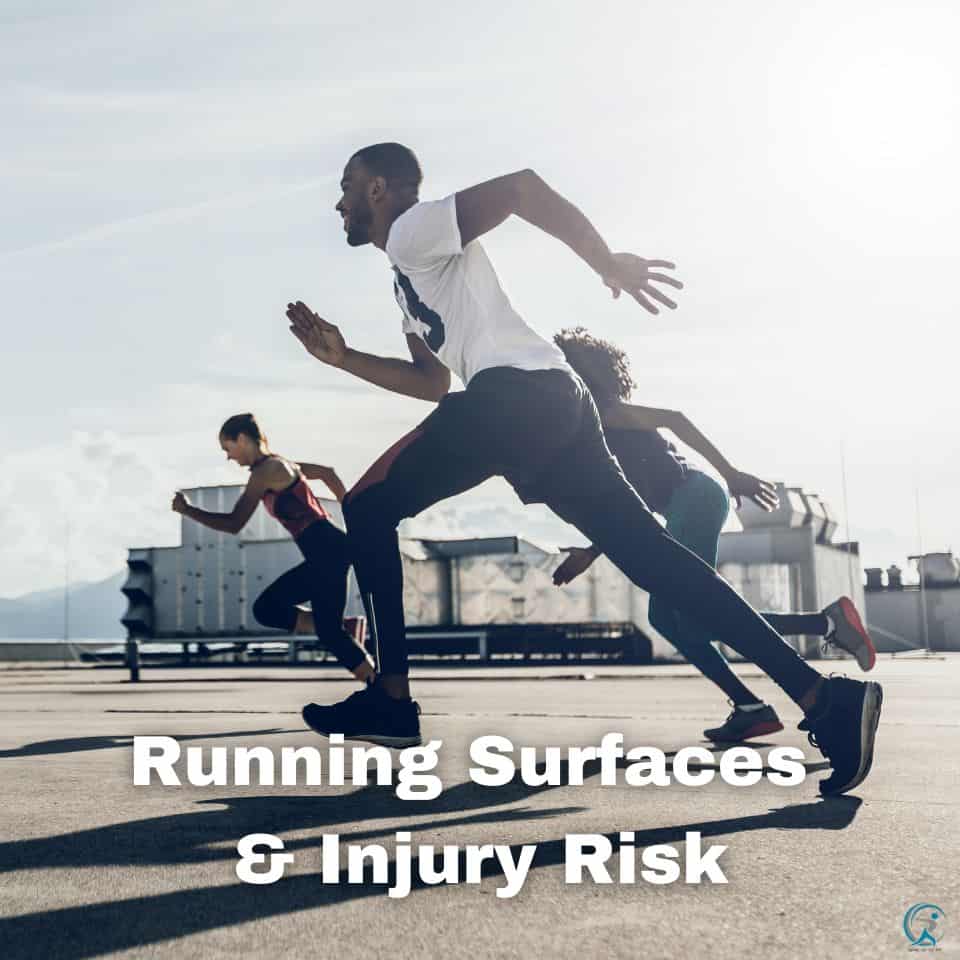
Hard Surfaces (Concrete, Asphalt)
Hard surfaces are the most common type of running surface and include concrete, asphalt, and other similar materials. They are often found on roads, sidewalks, and some running tracks. These surfaces are characterized by their firmness and lack of give when applied force.
While they provide a stable and predictable surface for running, they can be hard on the body due to their high-impact nature. Studies have shown that running on hard surfaces increases the risk of stress fractures and shin splints.
This is because the impact forces generated by each stride are not absorbed as well as with softer surfaces. Additionally, the repetitive pounding on a hard surface can cause joint pain in the knees, hips, and ankles.
Soft Surfaces (Grass, Dirt, Sand)
Soft surfaces include natural materials such as grass or dirt trails and man-made materials like rubberized tracks. These surfaces provide more cushioning than harder ones, resulting in less impact trauma on joints while performing physical activity.
While soft surfaces reduce the risk of injury due to lower impact forces than harder ones do, there is an increased risk of ankle sprains due to uneven terrain or surface irregularities beyond human control. Additionally, soft surfaces tend to be slower than hard ones due to their compressibility, making it harder for athletes to maintain speed during long distances.
Mixed Surfaces (Tracks, Treadmills)
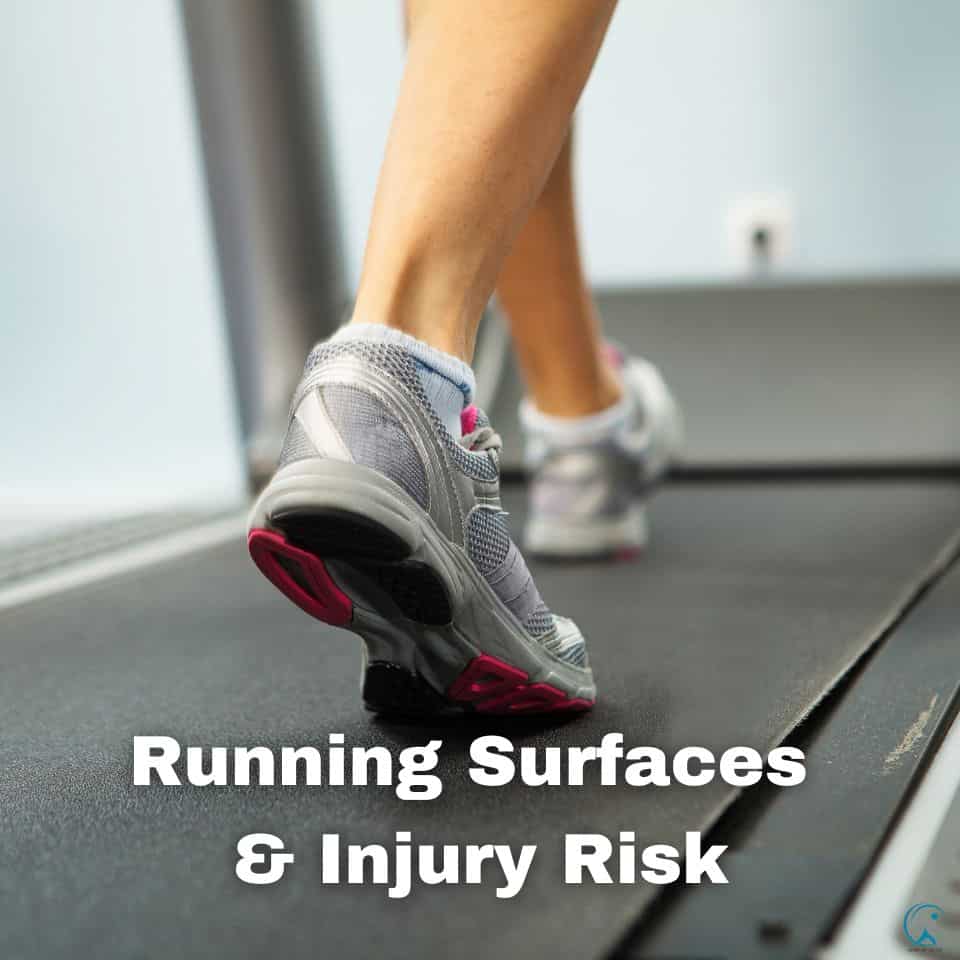
Mixed surfaces offer a balance between speed and shock absorption. That’s why treadmills or rubberized tracks are often used for training purposes in sports teams worldwide. These running surfaces combine synthetic materials with traditional ones, yielding better performance for athletes who must train indoors or have limited access to outdoor tracks.
Treadmills offer good cushioning for joints and the ability to control the speed of the workout, but they lack variation and force runners to maintain a constant pace. Rubberized tracks provide a consistent environment with good shock absorption but can be expensive, limited in availability, and don’t provide all athletes with access to train or compete on them.
Each type of running surface offers advantages and disadvantages depending on the needs of each runner. An athlete’s choice may be influenced by environmental factors such as weather or terrain and personal factors such as injury history or foot type.
Impact on Performance
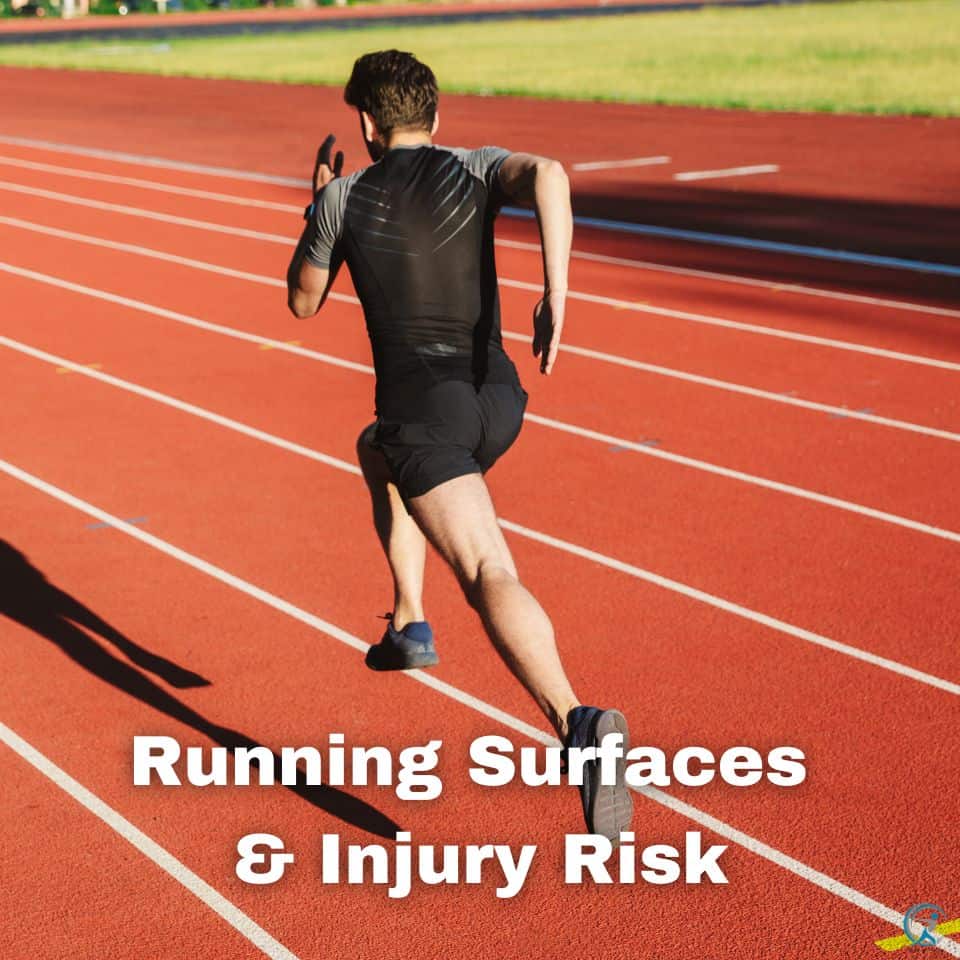
Hard surfaces – faster times but higher impact on joints
Running on hard surfaces such as concrete or asphalt can lead to faster times due to the consistent level of resistance offered. The harder surface allows for a quick and efficient rebound, resulting in a faster pace.
However, this surface type can also increase joint impact, leading to more stress on the body. The risk of injury can be high for new runners or those with prior injuries.
Studies have shown that running on hard surfaces can increase the forces applied to joints by up to 250%. This increased force increases the risk of developing shin splints, stress fractures, and knee pain.
Runners who train on hard surfaces should focus on proper form and footwear selection. Consider using cushioned shoes or inserts designed for shock absorption.
Soft surfaces – slower times but a lower impact on joints
Soft running surfaces such as grass, dirt, and sand are on the other end of the spectrum. While these types of terrain may slow down runners initially, they provide a lower-impact environment that is easier on the joints.
Soft surfaces allow for a softer landing during each stride than harder surfaces. Studies have shown that running on soft surfaces reduces pressure by up to 50% compared to harder ones.
This reduction in pressure leads to less stress on the body’s joints and bones overall. Runners who frequently experience joint pain or have a history of stress fractures may benefit from switching from hard pavement to soft trails.
Mixed Surfaces – Balance Between Speed and Impact
Mixed running tracks allow runners to balance speed and impact when training. These tracks offer cushioning properties (typically made of rubber) while allowing for fast-paced workouts that mimic track competitions.
Mixed tracks often offer better shock absorption than concrete or asphalt surfaces. However, they do not provide the same level of cushioning as grass or sand.
Runners who favor balancing speed and impact may prefer mixed surfaces over hard or soft terrain. Choosing running surfaces that support your goals while minimizing injury risks is essential.
Each surface offers its advantages and drawbacks. Runners should consider their training goals while assessing their conditions before deciding on the best surface balancing.
Check Out: Protein diet plan for weight loss in 7 days
Impact on Injury Risk
Running surfaces have a significant impact on the occurrence of injuries in runners. While hard surfaces such as concrete and asphalt are common in urban environments, they provide a high level of impact on the body, leading to an increased risk for stress fractures and shin splints.
These injuries are caused by the constant pounding of the feet on a hard surface without enough cushioning. Runners who frequently train on these surfaces should take precautions to reduce injury risk, including wearing proper footwear with good shock absorption and strengthening exercises.
On the other hand, soft surfaces such as grass and dirt offer more cushioning but may increase the risk of ankle sprains due to uneven terrain or hidden obstacles. This is especially true for trail running, where rough terrain is common.
To minimize ankle sprains while reaping the benefits of softer surfaces, runners should focus on maintaining balance through strength training exercises targeting the ankles and lower legs. Mixed surfaces such as tracks and treadmills provide a balance between speed and injury risk.
They offer cushioning compared to hard surfaces while providing a more even running surface than grass or dirt. Runners who want to minimize injury risks while achieving fast times should consider incorporating mixed surfaces into their training regimen.
Check Out: Are Running Shoes Good For Hiking?
Factors to Consider When Choosing a Running Surface
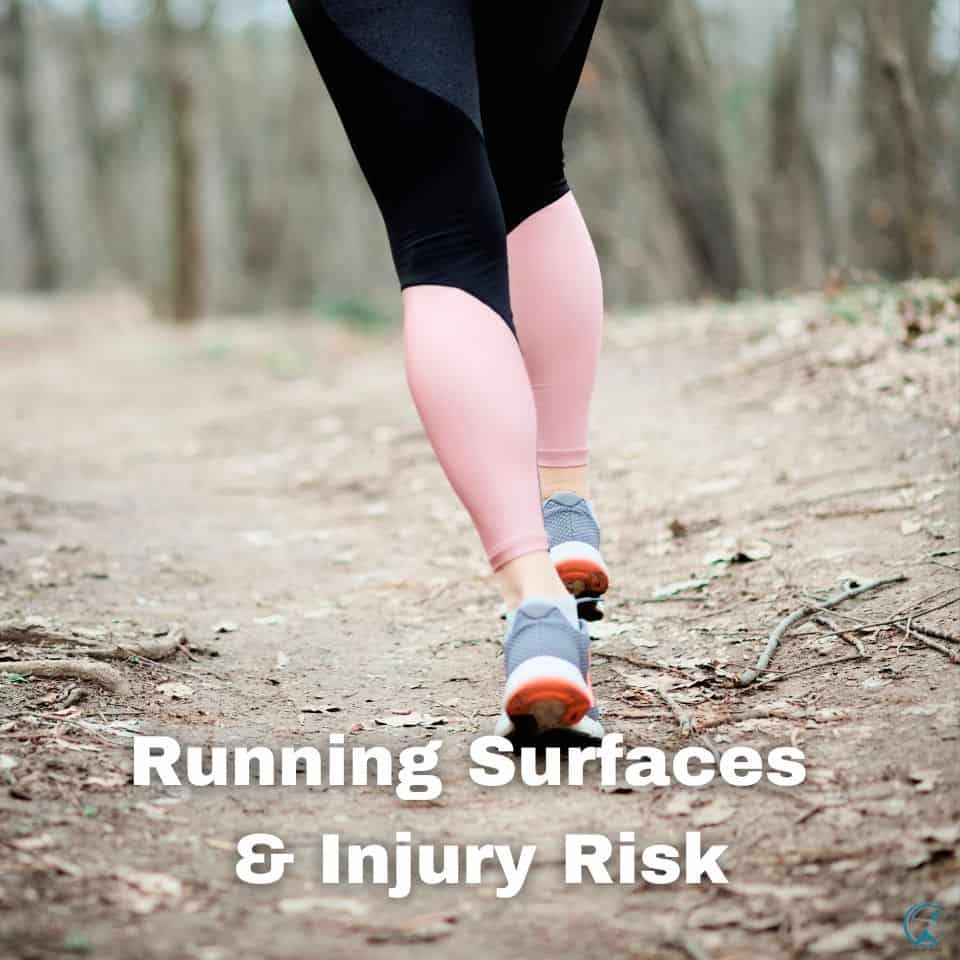
Running is an excellent form of exercise that can help reduce stress, improve cardiovascular health, and boost overall fitness. However, paying attention to the surface you run on is essential to get the most out of running while minimizing injury risk. All runners should consider two main factors when choosing a running surface: environmental and personal.
Environmental Factors (weather, terrain)
The environment in which you choose to run can significantly impact your performance and injury risk. For example, running on wet pavement or mud increases the likelihood of slipping and falling, while running on steep hills puts extra stress on your knees.
In contrast, running on flat terrain provides a more consistent surface for your body to adapt to and reduces the risk of twisting an ankle. Another critical factor in choosing a running surface is weather conditions.
Extreme heat or cold temperatures can make it harder for your body to regulate temperature during exercise and may increase the risk of dehydration or hypothermia. Similarly, excessively humid conditions can cause sweat to stick around longer, making it hard for your body to cool down.
Personal Factors (injury history, foot type)
Your characteristics, such as injury history and foot type, are essential in selecting the ideal surface for your runs. Runners with prior injuries such as shin splints or plantar fasciitis may benefit from softer surfaces such as grass or dirt trails instead of harder surfaces like concrete or asphalt, which put more pressure on joints.
Foot type is another factor that many runners overlook when selecting their preferred terrain. Runners with high arches have less shock absorption ability than those with flatter feet, so they may want to consider softer surfaces like sand or grass instead of hard ones like concrete.
While there is no one-size-fits-all approach to choosing a running surface, considering environmental and personal factors can help you make an informed decision. By selecting the right surface for your needs, you can maximize your performance while minimizing the risk of injuries.
Check Out: New to Running? Here Are 11 Tips to Help You Get Started
The Great Surface Debate: How Running Terrain Affects Performance and Injury

In sports medicine, the impact of running surfaces on performance and injury risk is a hot topic. Novice and experienced runners can benefit from understanding how different terrains affect their lower extremities, leg stiffness, and kinematics. As noted in various studies, including those published in the Journal of Sports Medicine (J Sports Med) and the British Journal of Sports Medicine (Br J Sports Med), running on the right surface can make a significant difference in achieving your running goals.
The Shoe Factor: Maximizing Comfort and Minimizing Injuries on Varied Surfaces
A crucial aspect of running safely and efficiently is selecting the appropriate running shoe for the chosen terrain. Shoes with adequate cushioning and support can help reduce the risk of overuse injuries, ACL injuries, and lower limb injuries. Specifically, heel strike patterns and tibial acceleration can be influenced by shoe choice, making it paramount for both recreational and distance runners to find the perfect fit for their individual needs.
Check Out: How running shoes should fit – A simple guide
Mileage and Intensity: Striking the Right Balance to Prevent Running Injuries
Weekly mileage and speed workouts significantly determine the likelihood of running-related injuries, such as tibial and stress fractures in the lower extremity. By carefully monitoring and adjusting the intensity and mileage of their runs, runners can minimize injury risks while striving to reach their performance goals. A systematic review of sports medicine research can provide valuable insights for runners seeking to optimize their training while staying injury-free.
Conclusion
The type of running surface you choose can significantly impact your performance and injury risk. Hard surfaces are associated with faster times but a higher impact on joints, while soft surfaces offer slower times but a lower impact on joints.
Mixed surfaces provide a balance between speed and impact. When choosing a running surface, it is essential to consider environmental and personal factors.
Based on the findings discussed in this paper, we recommend that runners prioritize injury prevention by choosing softer surfaces for their regular training runs. This is especially important for runners with a history of stress fractures or shin splints.
However, if speed is a top priority or if you are preparing for a race on a hard surface, it may be beneficial to incorporate some harder surface training to prepare your body. Future research should continue to explore how different running surfaces affect performance and injury risk to provide more tailored recommendations for individual runners based on factors such as age, foot type, and injury history.
Further research is needed on mixed surfaces such as tracks and treadmills to understand their impact on performance and injury risk. Overall, by being intentional about the running surfaces you choose based on your individual needs and goals, you can minimize your risk of injury while improving your running performance.
References
The effect of three surface conditions, speed and running … – PubMed
The effect of three surface conditions, speed and running experience, on the vertical acceleration of the tibia during running Sports Biomech. 2017 Jun;16 (2):166-176. doi 10.1080/14763141.2016.1212918. E …
Athletic Play Surfaces and Injury Risk: Current Sports Medicine … – LWW
Various surfaces (concrete, asphalt, synthetic rubber) alter vertical acceleration and shock absorption for indoor running tracks.
The effect of three surface conditions, speed, and running experience on …
Research has focused on parameters associated with injury risk, e.g., vertical acceleration. These parameters can be influenced by running on different surfaces or at different running speeds, …
The Implications of Sports Biomechanics Studies on the Research and …
The results of this review study were: (1) The functional positioning of running shoe design and the target groups tend to influence running performance and injury risk; (2) Thickness of …
How Running Surfaces and Speed Influence Your Risk of Injury
On the basis of these findings, running longer distances at slower speeds, especially when fatigued, may contribute to knee overuse injuries. Before you push the accelerator, consider… …
As a veteran fitness technology innovator and the founder of GearUpToFit.com, Alex Papaioannou stands at the intersection of health science and artificial intelligence. With over a decade of specialized experience in digital wellness solutions, he’s transforming how people approach their fitness journey through data-driven methodologies.
